Accused of declaring himself the son of God and the "King of the Jews," Jesus was crucified in the Roman province of Judaea in 30 or 33 C.E.
In one of the most famous passages of the Bible, Jesus Christ is taken before Pontius Pilate, the Roman governor of Judaea. “What then shall I do with Jesus who is called Christ?” Pilate asks the crowd, in the Gospel of Matthew. The crowd screams back: “Let Him be crucified!” Though purportedly hesitant, Pilate eventually bows to their demand and allows Jesus to be sentenced to death. But why was Jesus Christ crucified?
To answer the question, you have to untangle two things: what Jesus Christ had done to draw the wrath of Jewish leaders, Roman officials, and the crowd at his trial, and why crucifixion was chosen as an apt punishment.
Nearly 2,000 years later, there’s a bit of guesswork involved when it comes to examining Jesus Christ’s crucifixion. But here’s why religious scholars and historians believe that Jesus was so violently crucified — not merely punished — when he was brought before Pontius Pilate in 30 or 33 C.E.
The Thorny Path To The Crucifixion Of Jesus
Jesus Christ was born in Bethlehem sometime between 7 B.C.E. and 1 B.C.E. (though likely not on December 25th — or even in the winter). In his 30s, he became a preacher and began to travel and spread his message.
By most accounts, Jesus Christ was of average height and looked like many other men in first-century Judaea. But Jesus’ message was something new.
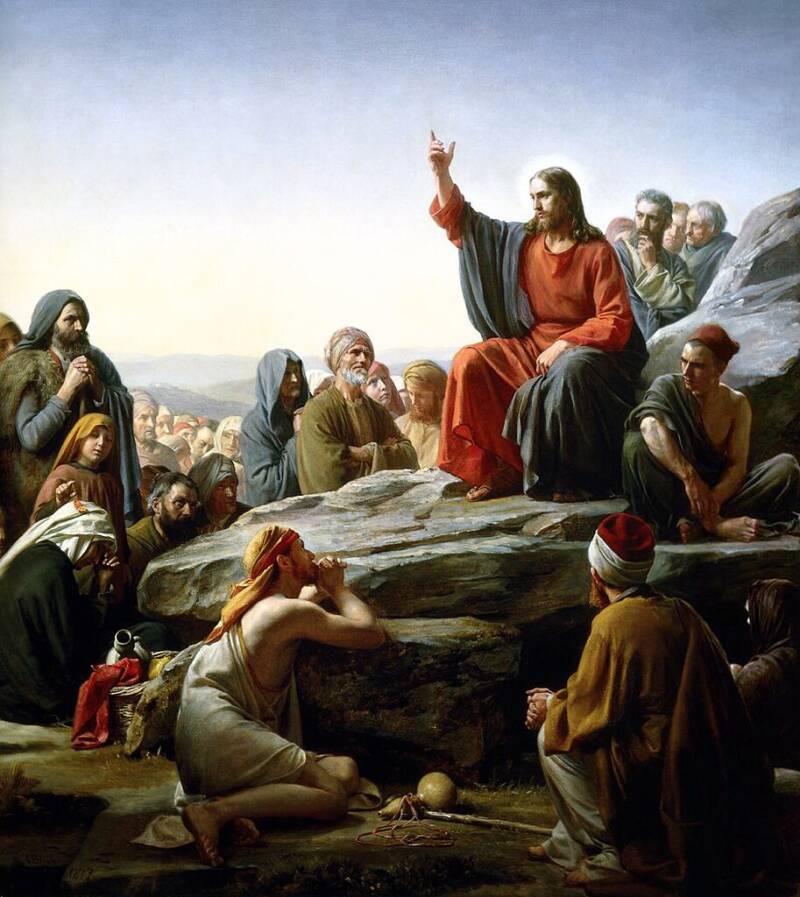
Public DomainThough there were many traveling preachers in Judaea, Jesus’ message was new — and spreading quickly.
Jesus said there was a kingdom greater than Rome and God would take care of society’s poorest members. And — to the alarm of Jewish leaders — some of his followers began to believe that he was the Messiah.
“I am the way and the truth and the life. No one comes to the Father except through me,” Jesus purportedly said, according to John 14:6.
As John 5:18 further explains: “For this reason they tried all the more to kill him; not only was he breaking the Sabbath, but he was even calling God his own Father, making himself equal with God.”
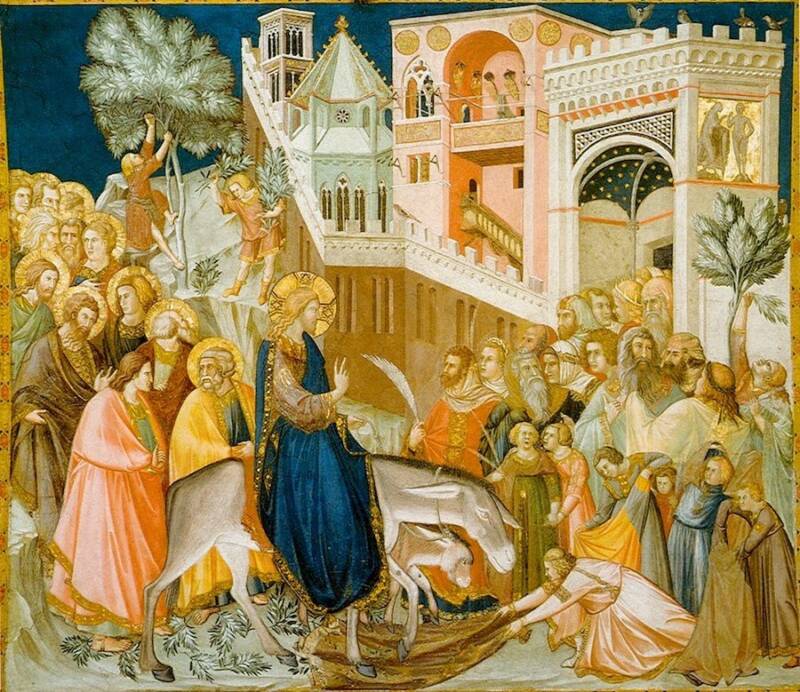
Pietro Lorenzetti/Wikimedia CommonsJesus was initially welcomed when he entered Jerusalem shortly before his crucifixion.
But things came to a head during Passover in 30 or 33 C.E., when Jesus traveled to Jerusalem. Then, he was greeted by adoring crowds who waved palm branches to welcome him. This was threatening enough to local religious leaders, but when Jesus found pilgrims exchanging money and sacrificing animals at holy temples, he flew into a rage and drove them out.
The Sanhedrin, a Jewish ruling body composed of priests and local elites, soon decided that Jesus had gone too far. Not only did his growing popularity threaten them, but it also threatened peace with Rome.
They arranged for his arrest, hoping that he’d be sentenced to death. But why was Jesus Christ crucified — and not punished another way?
Why Was Jesus Christ Crucified? Inside His Trial
Following his betrayal by his disciple Judas Iscariot, Jesus Christ was arrested in the Garden of Gethsemane and put on trial before the Sanhedrin.
The Sanhedrin found him guilty of blasphemy for calling himself the Son of God. Christianity.com explains that the Jewish leaders of the Sanhedrin wanted Jesus killed — but they could not order an execution themselves. So, they took him before the Roman governor of Judaea: Pontius Pilate.
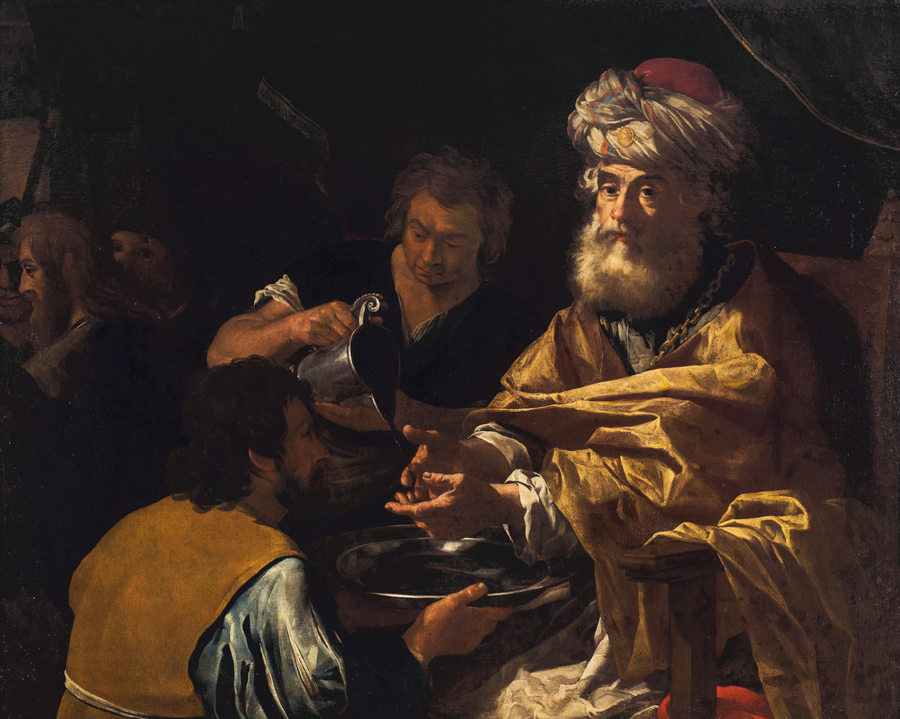
Public DomainPontius Pilate washing his hands after ordering Jesus’ crucifixion.
Pilate had become the governor of Judaea some years earlier, around 26 C.E. And now, it fell on him to decide Jesus Christ’s fate.
According to the Biblical Gospels, Pilate interrogated Jesus about his alleged crimes. During their conversation, Pilate seemed to pick up on certain language about “kings” and “kingdoms.”
In John 18:33-38, Jesus tells Pilate: “My kingdom is not of this world. If it were, my servants would fight to prevent my arrest by the Jewish leaders. But now my kingdom is from another place.” Pilate responds: “You are a king, then!” Jesus answers: “You say that I am a king.”
Turning to the nearby gathering crowd, Pilate notes that it’s Passover and that tradition states that he can commute one criminal’s sentence. But when he asks the crowd whether they want him to release “the King of the Jews,” they demand that he release another man named Barabbas.
Indeed, the Gospels depict Pilate as a reluctant judge in front of a bloodthirsty mob. As they cry, “Let Him be crucified,” Pilate asks what “evil” Jesus has done and washes his hands — literally — of Jesus’ death.
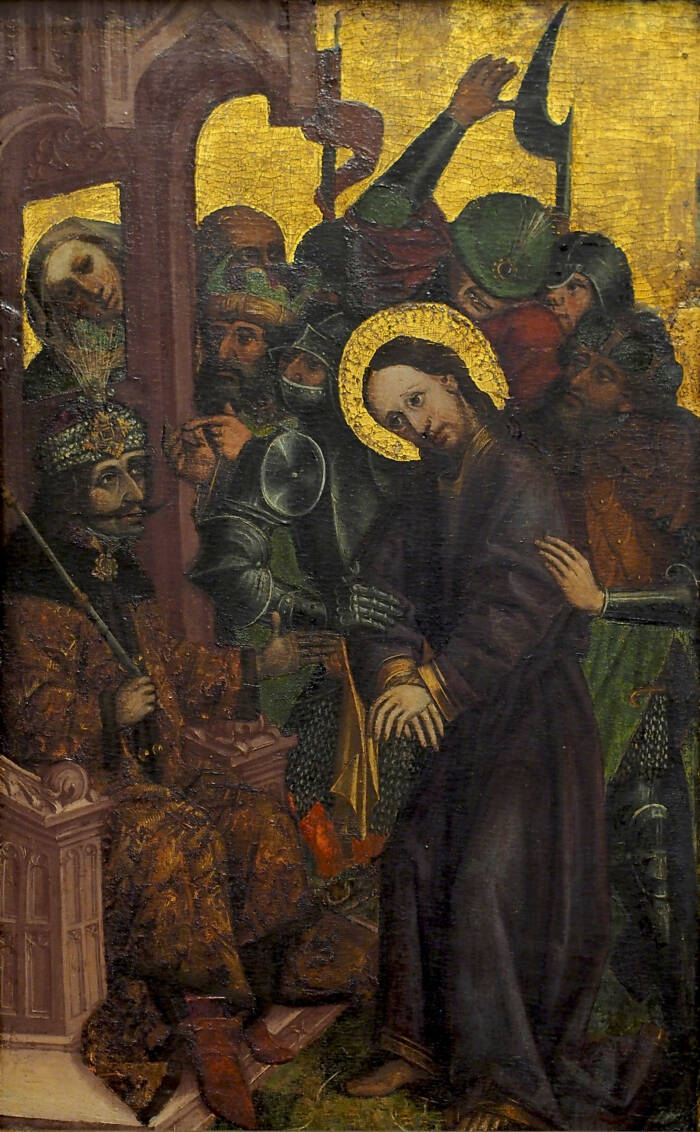
Public DomainA 15th-century depiction of Jesus Christ on trial before Pontius Pilate.
But Biblical scholars have noted that Pilate probably would’ve been more likely to side with the crowd. Jesus spoke of kings and kingdoms, and of kingdoms more powerful than Rome. To Pilate, the accusation that Jesus had called himself the “King of the Jews” likely would’ve been considered treasonous, and a serious crime against the Roman government. Historical accounts also describe Pilate as cruel, which suggests that he wouldn’t be troubled by the thought of sentencing anyone to death. What’s more, executing Jesus probably seemed like the easiest way to stop his ascent.
“If Jesus was causing trouble at a gathering like Passover, when the city was crowded to bursting, I don’t think Pilate would have spent much time worrying about what to do with him,” Helen Bond, the head of the University of Edinburgh’s School of Divinity and author of Pontius Pilate in History and Interpretation, explained to HISTORY. “It was entirely up to the governor as to how he dealt with the case, and after hearing the evidence he no doubt thought that getting rid of Jesus was the best course of action.”
This also seems to answer the question of why Jesus was crucified (as opposed to another execution). As Slate reports, this execution was saved for special cases — namely, people who revolted against Roman rule or upset the general social order. It was also frequently used for enslaved people, foreign enemies, and disgraced soldiers. Because Jesus was crucified with the plaque “INRI” on the cross, thought to mean Iesus Nazarenus, rex Iudaeorum or “Jesus of Nazareth, King of the Jews,” it seems clear that this “treasonous” offense is what led to Jesus’ death.
But there was one more reason why Jesus was crucified, too. Crucifixion was seen as a deeply shameful death, and thus a good way to stop people from talking about Jesus Christ — and his message — forever.
The Surprising Aftermath Of The Crucifixion
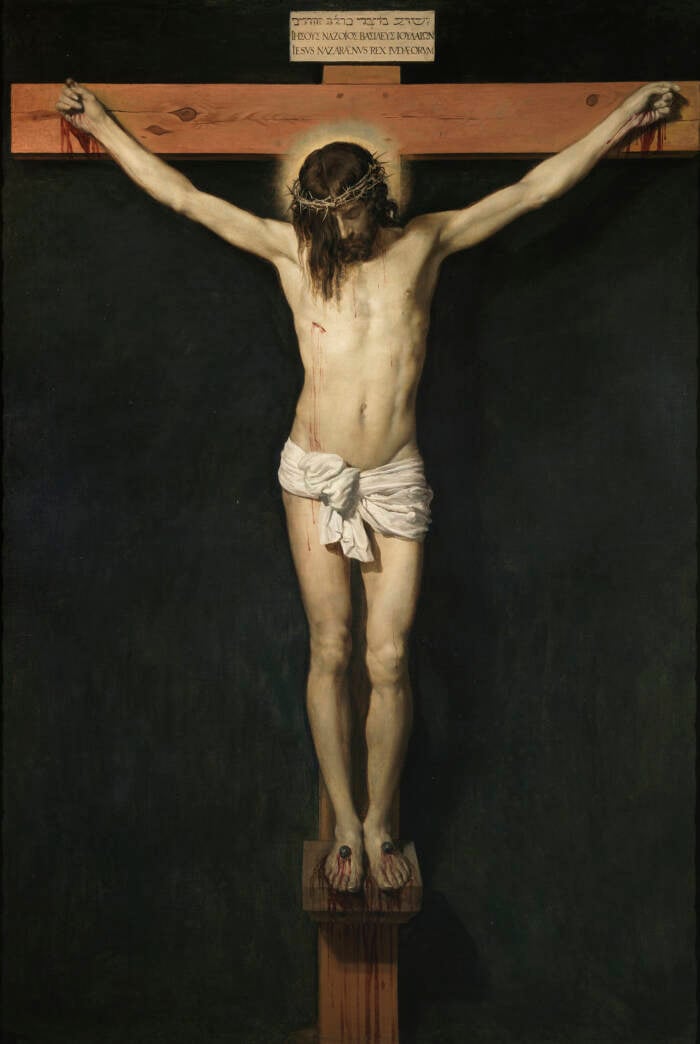
Public DomainThe crucifixion of Jesus Christ is an important symbol in Christianity today, but it wasn’t always like that.
In Corinthians, Paul the Apostle remarks: “For to those who are perishing, the preaching of the cross is foolishness; but to us who are being saved, it is the power of God.” The word choice here is key. In the first century, many did see worshipping the cross as foolish — because crucifixion was so shameful.
As Slate notes, early Christians often tried to avoid the subject of crucifixion. Some even shared stories about Jesus somehow escaping crucifixion at the last moment, and Muslim tradition holds that Jesus avoided crucifixion because God would not have let him die such a shameful death.
Indeed, researchers have found Roman graffiti from the second century that mockingly references the crucifixion of Jesus Christ. Centuries ago, someone scratched a drawing of a crucified man with a donkey’s head onto a wall of a room near Rome’s Palatine Hill. A human figure stands beneath, alongside the words: “Alexamenos worships his god.”
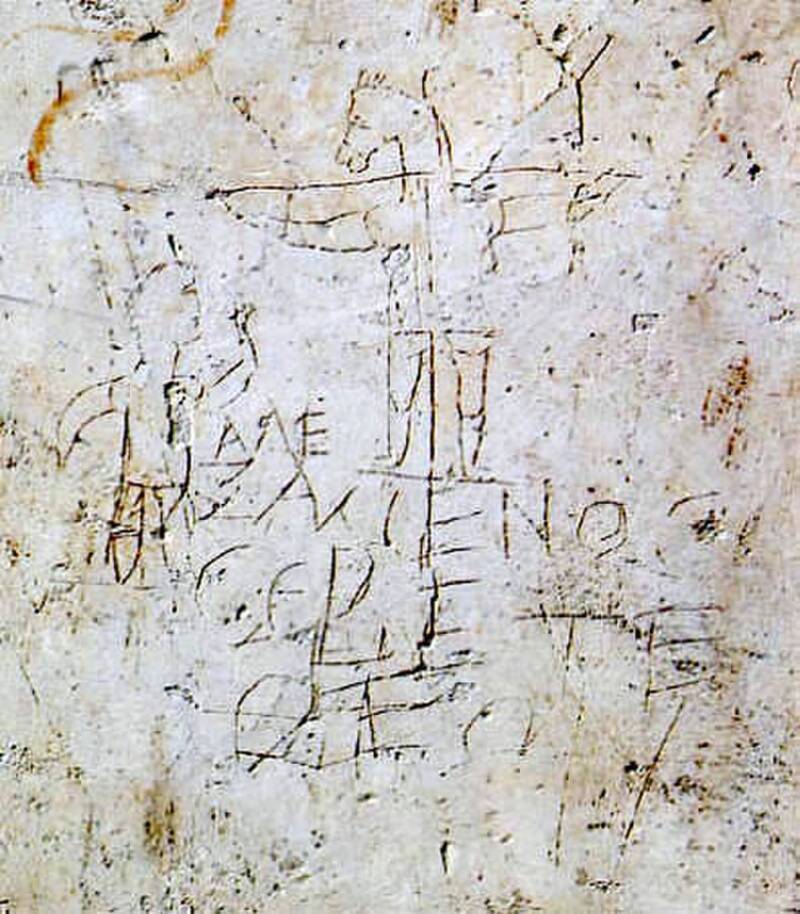
Public DomainGraffiti from the second century that mockingly references Jesus Christ’s death by crucifixion.
But this perception — like many things about Jesus Christ, including his race — changed slowly over time. Before long, Jesus Christ’s crucifixion became an important part of Christian tradition, alongside his resurrection from his tomb, which was said to have been witnessed by Mary Magdalene.
So why was Jesus crucified? Jewish and Roman leaders back in the first century likely saw it as the best and most permanent way to deal with his popularity. Not only would crucifixion kill Jesus, but it was such a disgraceful death that they believed his followers would turn away in shame.
Of course, the opposite happened. Today, the cross is one of the most powerful religious symbols in the world. And many Christians believe that Jesus’ crucifixion was always part of God’s plan and that his death was a sacrifice for the sins of man — so that humanity could be saved.
After finding out why Jesus was crucified, go inside the curious question of Jesus’ real name. Or, untangle the mystery of who exactly wrote the Bible. Then, learn about how old the Virgin Mary was when she had Jesus.






